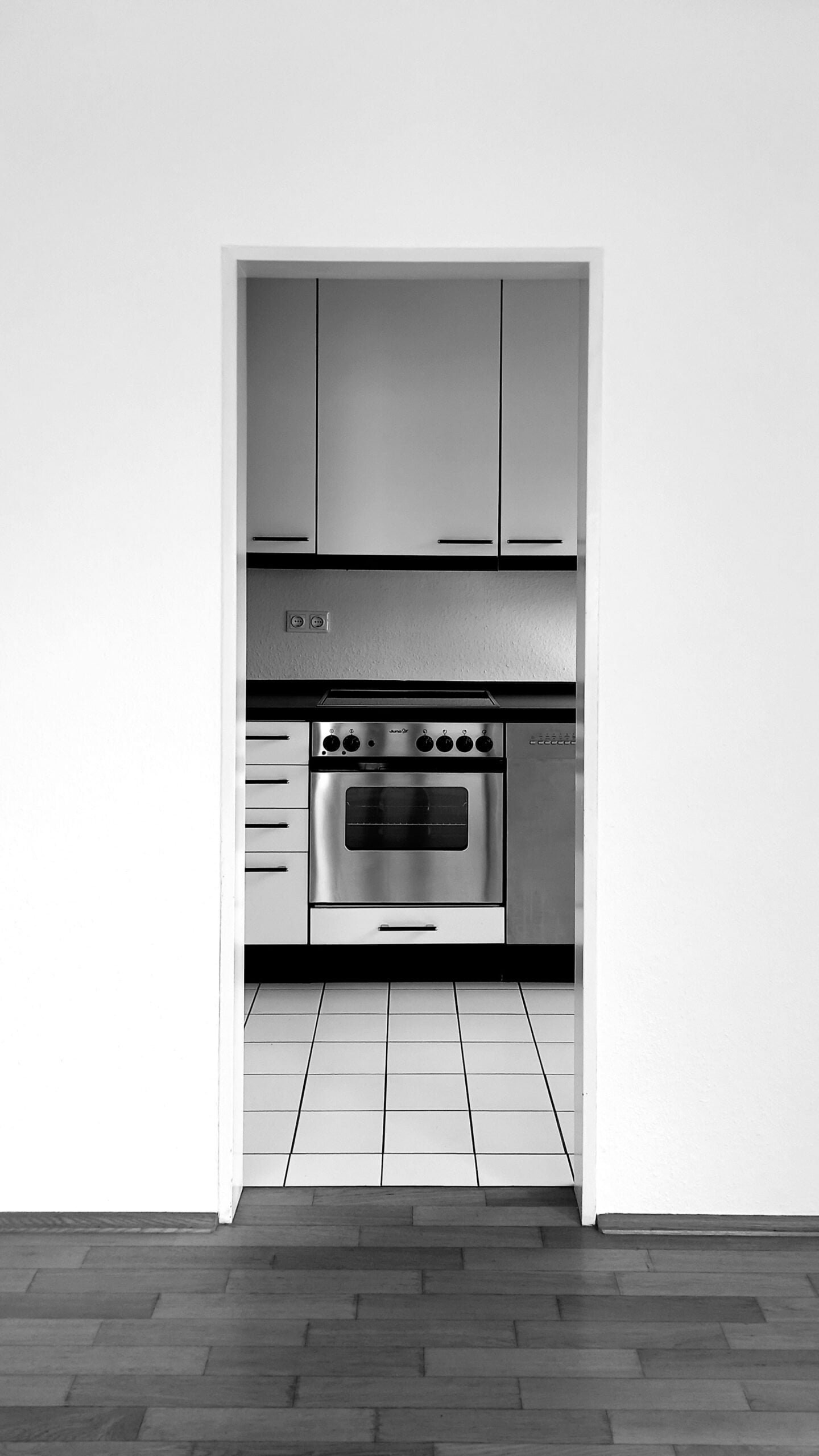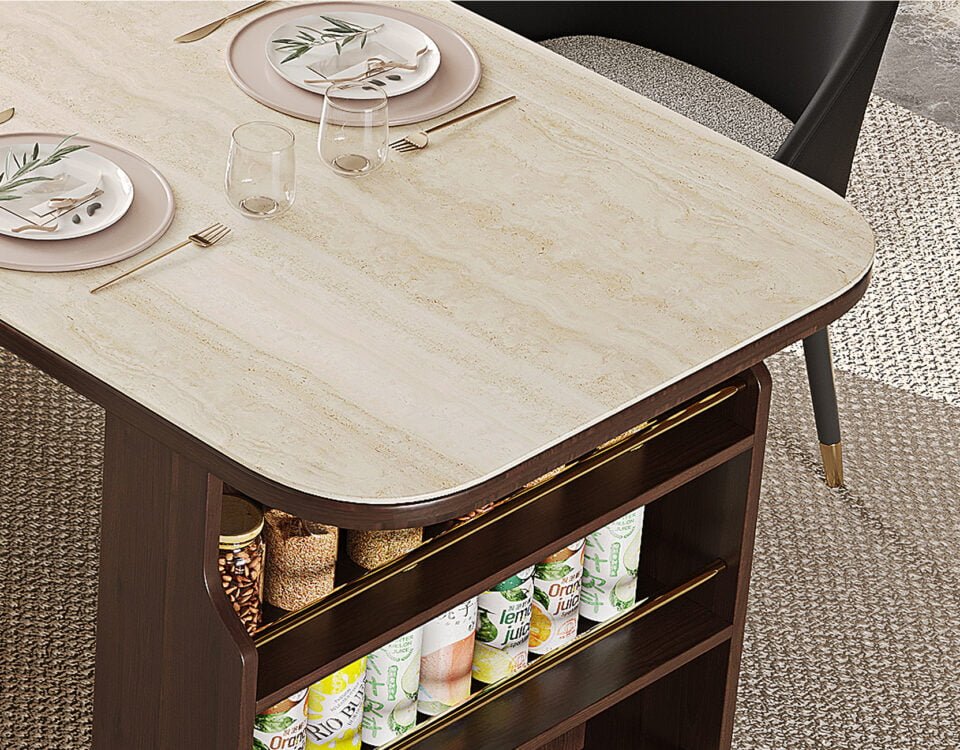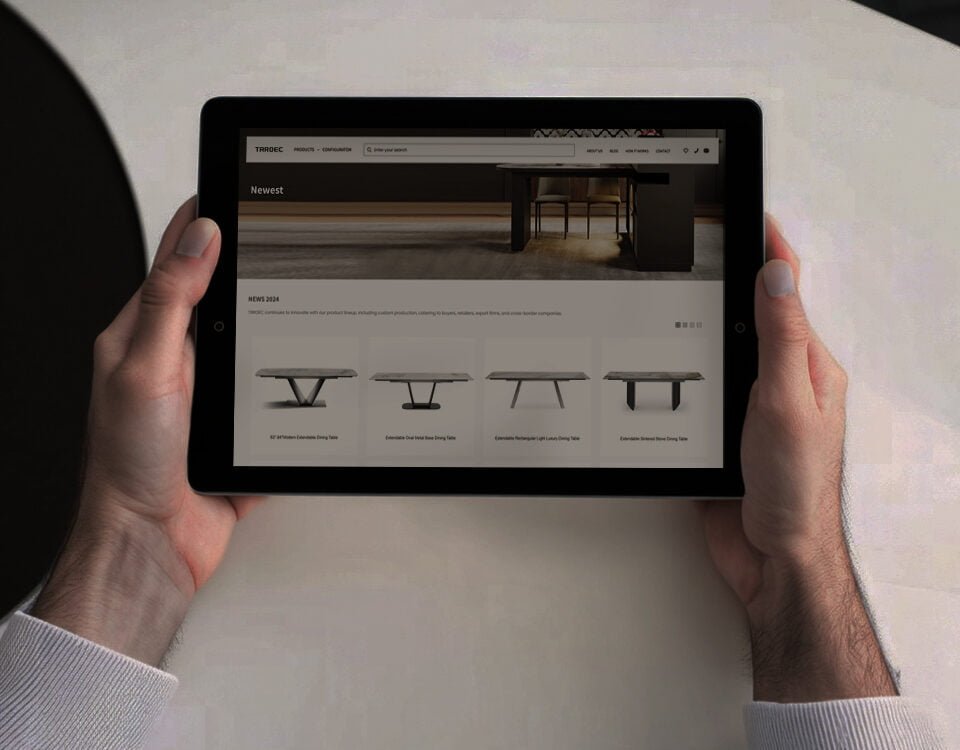
Introduction to Modern Kitchen Furniture
Modern kitchen furniture has evolved significantly over recent years, blending aesthetics with functionality to create inviting and efficient spaces. The importance of having stylish yet practical kitchen furniture cannot be overstated. It not only enhances the overall look of the kitchen but also improves its utility, making it more enjoyable to use daily. One of the current trends in modern kitchen furniture is the emphasis on minimalistic designs that offer clean lines and unassuming elegance. These designs often incorporate materials such as stainless steel, glass, and engineered wood, which are both durable and visually appealing.
Functionality is key when selecting kitchen furniture. Today’s homeowners are looking for pieces that offer more than just aesthetic value. For instance, extendable dining tables have become popular as they provide flexibility for both everyday meals and larger gatherings. Cabinets and islands with ample storage and clever organization solutions help keep the kitchen tidy and make it easier to find what you need when cooking. Additionally, ergonomic designs are crucial for ensuring comfort and reducing strain during food preparation and other kitchen activities.
Another significant trend is the integration of technology into kitchen furniture. Smart storage solutions, such as pull-out shelves and drawers with built-in charging stations, are becoming more commonplace. These innovations enhance the functionality of the kitchen space, making it more convenient and user-friendly. Sustainable materials are also gaining traction, as more consumers prioritize eco-friendly options that reduce environmental impact without compromising on style or quality.
Incorporating modern kitchen furniture into your home is an investment in both style and practicality. Whether it’s through sleek, contemporary designs or versatile, multi-functional pieces, modern kitchen furniture is designed to improve the usability and appearance of your kitchen. As you explore various options, consider how each piece will integrate with your space and meet your needs, ensuring that your kitchen is both beautiful and highly functional.
The Versatility of Extendable Dining Tables
Extendable dining tables represent a unique blend of functionality and elegance, making them an invaluable addition to contemporary homes. These tables come in a wide array of styles and designs, ensuring they can meet the diverse needs of households, from small apartments to spacious family homes.
One of the primary advantages of extendable dining tables is their space-saving capability. For instance, tables with butterfly leaves allow homeowners to effortlessly increase their seating capacity. The butterfly leaf mechanism is designed in such a way that the additional leaves are stored under the table when not in use, which can be easily unfolded to extend the table’s length. This offers a seamless transition from a cozy family meal to a larger gathering.
Another popular type is the expandable end table, where the table slides apart in the middle to accommodate additional sections stored separately. This design is especially favored for its simplicity and directness, enabling users to adjust their table size with minimal effort. It is ideal for modern households seeking both style and versatility.
Real-world examples highlight the practical benefits of extendable dining tables. For instance, one satisfied customer noted how an extendable table from a renowned furniture brand transformed her dining space. “Our extendable dining table has been a game-changer. We live in a compact city apartment, and the ability to extend the table when we have guests is incredibly convenient. Plus, it still looks stylish even when compact,” she said.
Moreover, extendable dining tables can be found in various materials and finishes, from classic wooden designs to sleek glass and metal combinations, catering to different aesthetic preferences. This versatility underscores their popularity and practical value, solidifying their status as essential pieces in modern kitchen furniture.
Understanding the intricacies of a furniture manufacturing factory offers a fascinating glimpse into the world where design meets functionality. At the heart of the factory, the journey begins with design conceptualization. Designers collaborate closely with the production team to create detailed sketches and 3D models, ensuring that every detail aligns with the envisioned final product. This stage is crucial, as it dictates the aesthetic and functional benchmarks that the dining tables and kitchen furniture must meet.
Material sourcing is the next vital step. Factories typically maintain relationships with trusted suppliers to procure high-quality raw materials. Whether it’s hardwood, metal, or glass, each component is carefully selected to meet stringent durability and sustainability standards. The sustainability practices often adopted include using eco-friendly materials and ensuring that waste is minimized through efficient production techniques.
In the cut-and-assembly phase, the materials are shaped and assembled into the preliminary forms of the furniture pieces. Skilled artisans and craftsmen play an indispensable role here, leveraging both traditional techniques and modern machinery to ensure precision and craftsmanship. The formation process involves cutting, sanding, and joining pieces with meticulous attention to detail, ensuring a robust structure that can withstand extensive use.
Upon assembly, the furniture undergoes a rigorous quality control process. Quality assurance teams conduct a series of inspections to detect and rectify any imperfections. This step is critical to maintaining high standards and ensuring that each extendable dining table or kitchen unit is free from defects before it reaches the customer.
The incorporation of sustainability practices is evident throughout these operations. Factories are increasingly adopting energy-efficient practices, recycling initiatives, and low-emission production processes to reduce their environmental footprint. This commitment to environmental stewardship reflects a broader industry trend towards greener manufacturing practices.
Insights from factory workers and managers reveal a landscape of dedication and expertise. Workers pride themselves on the craftsmanship and the quality of the products they help create. Managers emphasize the importance of continuous improvement and innovation in maintaining the factory’s competitive edge in the market. Together, these elements paint a comprehensive picture of what it takes to bring high-quality kitchen furniture from concept to reality.
Understanding Wholesale Pricing in Kitchen Furniture
Wholesale pricing is a pivotal element in the kitchen furniture industry, acting as a primary bridge between manufacturers and retailers. It allows for bulk purchasing at reduced costs, which subsequently supports competitive retail pricing and higher profit margins. When it comes to kitchen furniture, wholesale pricing is intricately linked to various influential factors.
One of the major determinants of wholesale prices is the cost of materials. The type and quality of wood, metal, glass, or composite materials used significantly impact overall production costs. For instance, premium hardwoods like oak or walnut will inherently lead to higher wholesale prices compared to more economical alternatives such as MDF or plywood.
Production scale also plays a crucial role. Manufacturers running large-scale operations often benefit from economies of scale, enabling them to lower the per-unit cost of kitchen furniture. This reduction allows them to offer more competitive wholesale prices. Conversely, smaller production runs typically entail higher costs per unit, which are then reflected in the wholesale pricing.
Market demand further influences wholesale pricing. During periods of high demand, wholesale prices usually escalate due to the basic economic principle of supply and demand. Conversely, when demand slackens, manufacturers may lower prices to stimulate bulk purchases and move inventory.
For retailers and bulk buyers aiming to secure the best deals, a few negotiation strategies can be immensely beneficial. Building long-term relationships with suppliers often leads to better pricing and more favorable terms. Additionally, placing substantial or repeat orders can sometimes yield quantity discounts. Armed with market knowledge, buyers can effectively negotiate by leveraging information about material costs and industry trends to ensure they pay a fair price.
Understanding these dynamics is essential for both new and established retailers, allowing them to navigate the complexities of wholesale pricing and maintain profitability while offering competitive products to consumers.
The Benefits of OEM Services in Furniture Manufacturing
Original Equipment Manufacturer (OEM) services have become a cornerstone in the kitchen furniture industry, offering a range of advantages that extend beyond traditional manufacturing processes. OEM services involve creating products that are branded and sold by another company, allowing furniture brands to develop custom kitchen solutions without having to oversee the actual production themselves.
One of the significant benefits of OEM services is cost efficiency. By outsourcing production to specialized manufacturers, furniture brands can save substantially on operational costs that would otherwise be spent on labor, machinery, and production management. This cost-saving aspect is particularly crucial for small to medium-sized enterprises that may not have extensive resources to invest in their manufacturing infrastructure.
Furthermore, OEM services enhance the quality and innovation of kitchen furniture products. Brands can leverage the expertise and technology of specialized manufacturers to produce high-quality and innovative designs. This partnership allows brands to focus on other essential aspects of their business, such as marketing, sales, and customer service, ensuring a well-rounded approach to market competitiveness.
The significance of OEM services can be seen in various successful case studies. For example, a well-known kitchen furniture brand partnered with a leading OEM manufacturer to create a line of extendable dining tables tailored to customer preferences. This collaboration allowed the brand to introduce a unique product line faster and more cost-effectively than if they had developed it internally. The result was a substantial increase in market share and customer satisfaction.
Another instance involves a smaller kitchen furniture company that utilized OEM services to produce eco-friendly, sustainable kitchen cabinets. The partnership not only helped to reduce production costs and time but also ensured that the cabinets met high environmental standards, thus appealing to the growing market of environmentally conscious consumers.
In summary, OEM services in furniture manufacturing provide a strategic advantage, offering cost savings, enhanced quality, and the ability to introduce innovative products to the market swiftly. By leveraging these benefits, kitchen furniture brands can achieve greater market presence and customer satisfaction.
Trends and Innovations in Kitchen Furniture Design
In recent years, the kitchen furniture industry has seen a plethora of innovative designs that cater to evolving consumer preferences and modern lifestyle demands. A prominent trend is the integration of smart technology into kitchen furniture, transforming conventional pieces into multifunctional marvels. For instance, smart extendable dining tables now come equipped with features such as built-in wireless charging stations and touch-sensitive lighting, enhancing both convenience and dining experiences.
Eco-friendly materials have also become a cornerstone of contemporary kitchen furniture design. Sustainability-conscious consumers are driving demand for furniture crafted from reclaimed wood, bamboo, and other sustainable materials. This shift not only supports environmental conservation but also adds a unique aesthetic charm to the kitchen space. According to industry reports, the market for eco-friendly kitchen furniture is projected to grow significantly in the next decade, underscoring the importance of sustainable practices.
Another significant innovation is the development of multifunctional furniture pieces that maximize space efficiency. Many modern kitchens now feature extendable dining tables that can transform from a compact size suitable for daily meals into a larger setting for gatherings, offering unparalleled versatility. Similarly, kitchen islands with built-in storage and convertible workstations are gaining popularity for their ability to blend seamlessly with culinary activities while providing additional functionality.
Industry experts predict that the future of kitchen furniture design will continue to align closely with technological advancements and sustainable practices. As smart home systems become more prevalent, we can expect to see further integration of IoT capabilities in kitchen furniture, enabling users to control various aspects of their dining space through smart devices. Furthermore, innovations in recycling technologies and materials science are likely to introduce new eco-friendly options into the market.
These trends and innovations not only reflect the dynamic nature of consumer tastes but also highlight the industry’s commitment to meeting new challenges through creative and sustainable solutions.
Tips for Choosing the Right Kitchen Furniture for Your Home
Selecting the appropriate kitchen furniture can significantly impact the functionality and aesthetic appeal of your kitchen space. When choosing kitchen furniture, several factors should be taken into consideration to ensure that it complements your style, fits well within your space, and meets your budget constraints.
First and foremost, consider the durability of materials. Kitchens are high-traffic areas prone to wear and tear, so opting for robust materials like solid wood, stainless steel, or high-quality veneers can ensure longevity. Maintenance is equally essential; select materials that are easy to clean and resistant to stains and spills.
Compatibility with your existing decor plays a crucial role in creating a cohesive look. It’s important to choose furniture that blends seamlessly with your kitchen’s color scheme, cabinetry, and overall design theme. For instance, a modern kitchen with sleek cabinetry might benefit from minimalist furniture with clean lines, while a rustic kitchen could be complemented by farmhouse-style tables and chairs.
Ergonomic factors are often overlooked but are imperative for a comfortable and functional kitchen. Ensure that chairs and countertops are at an optimal height to prevent strain and that there is adequate clearance around tables and islands for easy movement. Convertible and adjustable furniture pieces can offer flexibility, especially in smaller kitchens.
To streamline the decision-making process, here’s a helpful checklist:
- Material durability (e.g., solid wood, stainless steel)
- Ease of maintenance and cleaning
- Compatibility with existing kitchen decor
- Ergonomic design and user comfort
- Space efficiency
- Budget considerations
For inspiration, you might explore popular styles such as Scandinavian, which emphasizes simplicity and functionality; Industrial, featuring raw textures and metal accents; and Traditional, with classic finishes and detailed craftsmanship. Each style offers unique elements that can cater to different tastes and requirements.
Conclusion: Investing in Quality Kitchen Furniture
As we have explored throughout this blog post, the significance of investing in high-quality kitchen furniture cannot be overstated. Both extendable dining tables and the intricate processes within factory operations stand as testament to the craftsmanship and innovation that define premium kitchen furniture. These elements not only contribute to the overall aesthetics of your dining space but also ensure functionality and durability, making them a prudent long-term investment.
Additionally, understanding the dynamics of wholesale pricing allows consumers to make more informed purchasing decisions, catching beneficial deals while maintaining an eye on quality. Engaging with OEM services provides a tailored approach that aligns kitchen furniture with specific consumer needs, whether it’s unique designs, material preferences, or particular dimensions.
By staying informed about the latest developments in the kitchen furniture industry, consumers equip themselves with the knowledge to select products that blend style, functionality, and durability. This awareness ensures that each purchase is not only a reflection of current trends but also an investment in quality that stands the test of time.
Ultimately, the confluence of smart investment and informed choices leads to satisfaction and enhanced usability in the kitchen space. High-quality kitchen furniture, including extendable dining tables, represents a fusion of art and engineering, enhancing daily living while offering practical benefits. By recognizing the value embedded in the craftsmanship and industry standards, consumers can transform their kitchens into spaces that epitomize elegance and efficiency.




